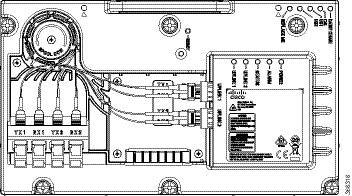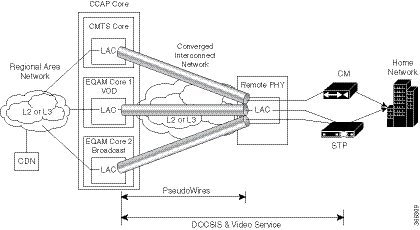Introduction
Driven by market evolution towards triple-play services, cable operators in emerging markets are seeking standardized and digital fiber-based solutions for economical and future proof access technologies. Much of the demand is driven by the need to provide higher bandwidth packet transport for Internet connectivity, video and voice services.
Data Over Cable Systems Interface Standard (DOCSIS®) is a standardized technology for services over cable and thus has strong interoperability between system providers. It also provides robust Quality of Service (QoS) methods, ensuring packet delivery during periods of network congestion. Traditionally, DOCSIS runs on linear fiber (or HFC) to provide service and is not naturally applicable for digital fiber. Cisco has bridged the gap by introducing a new access technology called the Remote PHY.
Existing Architecture
In the emerging markets, most triple-play consumers live in multi-tenant buildings (referred to as Multi Dwelling Units or MDU) with the number of residents usually being less than 500 residents per building or cluster. These buildings are typically served by fiber with one of several “final 100 meter” technologies installed in the buildings. These technologies include fiber, twisted pair, Ethernet, and coaxial. Cable operators have access to the cable in the building and use this cable for their services. Several technologies exist for enabling two-way services over cable. These include a number of proprietary and vendor-specific methods. However, a standards-based approach to using cable is typically preferred by operators, since this ensures vendor interoperability.
Need for the Cisco Remote PHY Solution
DOCSIS and EuroDOCSIS are standards that define two-way operation over a cable network. DOCSIS provides the necessary Quality of Service (QoS) tools for ensuring voice call connectivity during periods of network congestion that are anticipated in triple-play networks. DOCSIS is a robust and mature technology for voice, video, and IP video services.
The Cisco Remote PHY solution leverages existing IP technologies like Ethernet PON (EPON), Gigabit-capable Passive Optical Networks (GPON), and Metro Ethernet (MetroE) equipment; it deploys DOCSIS in MDUs over digital fiber to enable two-way services over cable.






 Feedback
Feedback